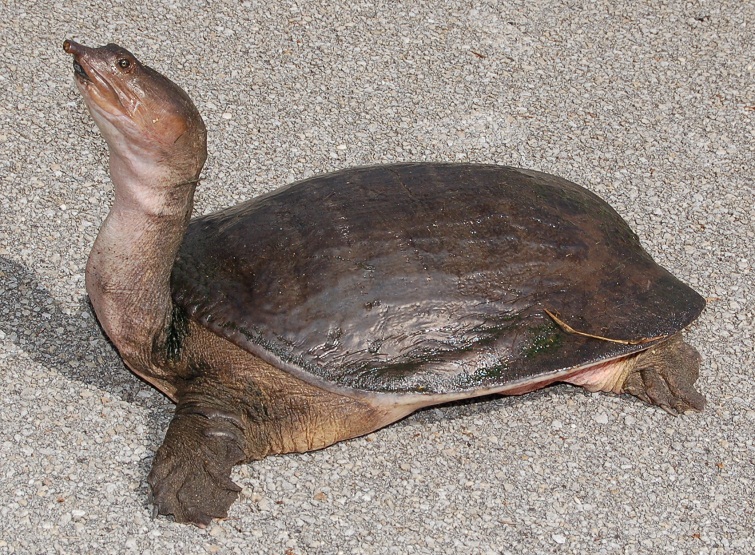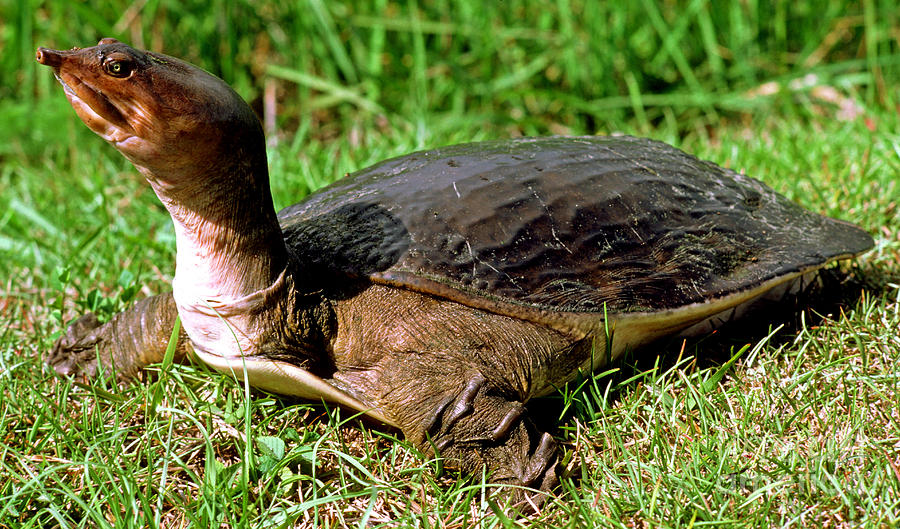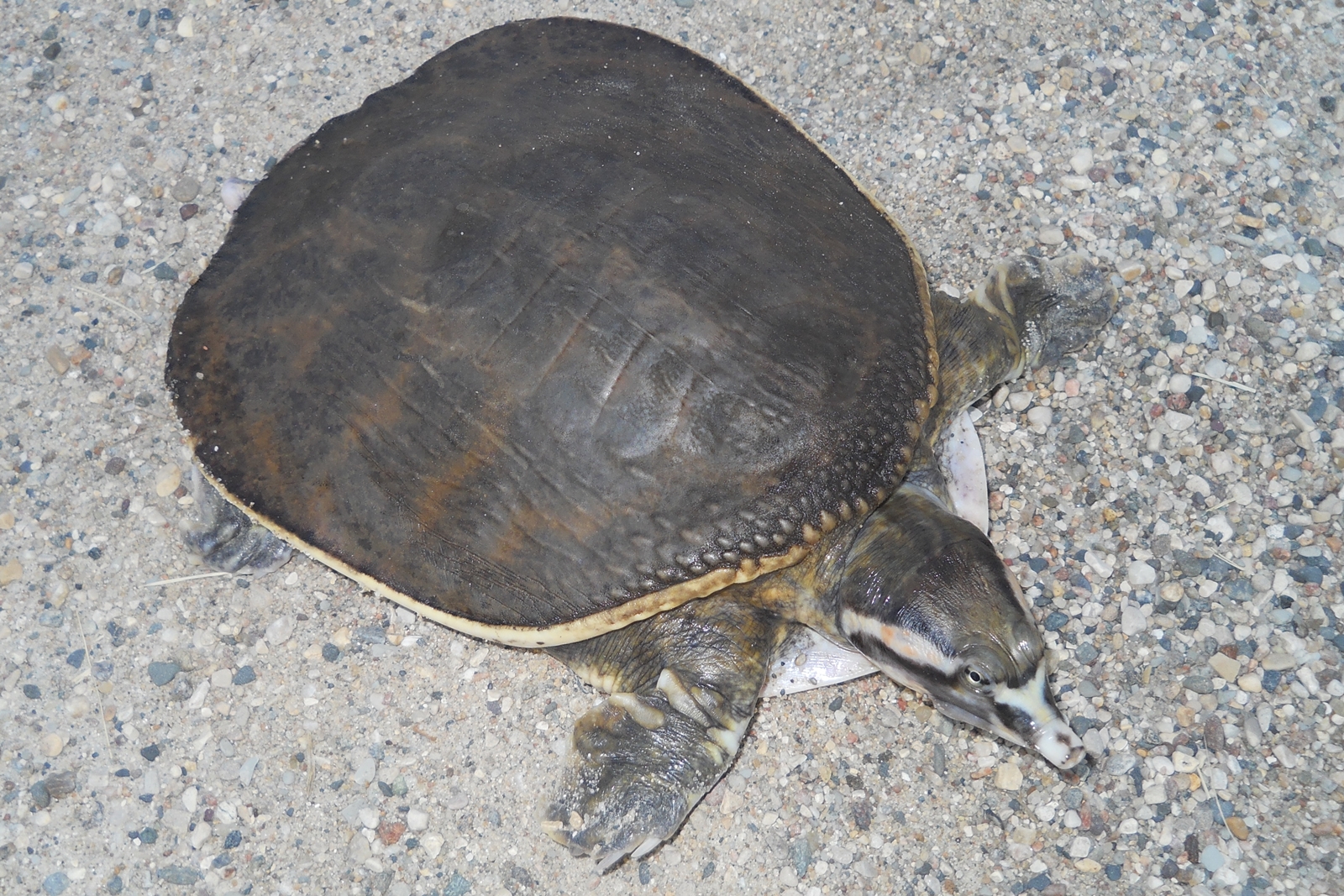Unveiling The Florida Softshell Turtle: An Aquatic Giant
The fascinating world of freshwater turtles holds many unique species, but few capture the imagination quite like the Florida Softshell Turtle. This remarkable reptile, known scientifically as Apalone ferox, is a true marvel of the southeastern United States' aquatic ecosystems. With its distinctive appearance and intriguing behaviors, it stands out among its shelled relatives, offering a glimpse into the diverse wildlife that thrives in Florida's wetlands and waterways.
From its leathery shell to its surprisingly quick movements on land, the Florida Softshell Turtle embodies a blend of ancient lineage and specialized adaptations. Whether you're a nature enthusiast, a budding herpetologist, or simply curious about the creatures inhabiting our planet, understanding this magnificent turtle's life—from its habitat and diet to its conservation status—provides invaluable insight into the delicate balance of nature and the importance of protecting our native species.
Table of Contents
- Unveiling the Florida Softshell Turtle: A Unique Aquatic Marvel
- Giants of the Freshwater Realm: Size and Scale
- Home Sweet Water: Habitat and Range of the Florida Softshell Turtle
- The Stealthy Hunter: Behavior and Diet
- Reproduction and Life Cycle: A Promiscuous Nature
- Conservation Status and Threats: Protecting a Resilient Species
- The Florida Softshell Turtle as a Pet: A Commitment for Experienced Keepers
Unveiling the Florida Softshell Turtle: A Unique Aquatic Marvel
The Florida Softshell Turtle, scientifically known as Apalone ferox, is a truly distinctive species that sets itself apart from most other freshwater turtles found in the Sunshine State and beyond. Belonging to the unique family of softshell turtles, it lacks the characteristic hard, bony shell that defines the vast majority of turtle species. Instead, its carapace is soft and leathery, providing a streamlined shape that aids its aquatic lifestyle. This fascinating reptile is a native species to the southeastern United States, primarily inhabiting Florida and extending into nearby states like southern South Carolina and westward to Mobile Bay, Alabama, across the southeastern lower coastal plain.
Understanding the Florida Softshell Turtle begins with appreciating its unique adaptations and its place within the complex web of North American freshwater ecosystems. Its evolutionary path has led to a creature perfectly suited for life beneath the water's surface, a master of camouflage and an efficient predator. The very name "softshell" immediately piques curiosity, inviting us to delve deeper into what makes this particular turtle so special and how it thrives in its watery domain.
Scientific Classification and Nomenclature
The scientific journey of the Florida Softshell Turtle has seen it known by a few names throughout history. Its current widely accepted scientific name is Apalone ferox. However, older classifications might refer to it as Trionyx ferox (Schneider), a name found in historical records such as the "Catalogue of American Amphibians and Reptiles." This scientific nomenclature is crucial for researchers and conservationists, providing a universal identifier that transcends common names and regional variations. It underscores the turtle's distinct lineage within the family Trionychidae, the softshell turtles.
The genus Apalone encompasses several species of softshell turtles native to North America, but Apalone ferox stands out due to its impressive size and specific geographic distribution. This precise classification helps in tracking populations, understanding evolutionary relationships, and implementing targeted conservation efforts, ensuring that discussions about the Florida Softshell Turtle are always clear and scientifically accurate.
Distinguishing Features: More Than Just a Soft Shell
Beyond its namesake soft, leathery shell, the Florida Softshell Turtle possesses several other physical characteristics that make it easily identifiable and truly unique. Its most striking features include a long, pig-like snout, which acts like a snorkel, allowing the turtle to breathe while remaining submerged, often buried in the substrate. This elongated snout is a key adaptation for its ambush predatory lifestyle, enabling it to remain hidden while still accessing air.
Another defining characteristic is its webbed feet. These powerful, paddle-like limbs are perfectly designed for propulsion through water, making the Florida Softshell Turtle an incredibly agile and swift swimmer. Unlike many hard-shelled turtles that might lumber through water, the softshell's streamlined body and webbed feet allow it to glide with remarkable speed and grace. These combined features—the leathery shell, the long snout, and the webbed feet—make the Florida Softshell Turtle

Florida Softshell Turtle Facts, Habitat, Diet, Life Cycle, Baby, Pictures

Florida Softshell Turtle Apalone Ferox Photograph by Millard H. Sharp

Florida Softshell Turtle - Facts, Habitat, Diet, Life Cycle, Pictures